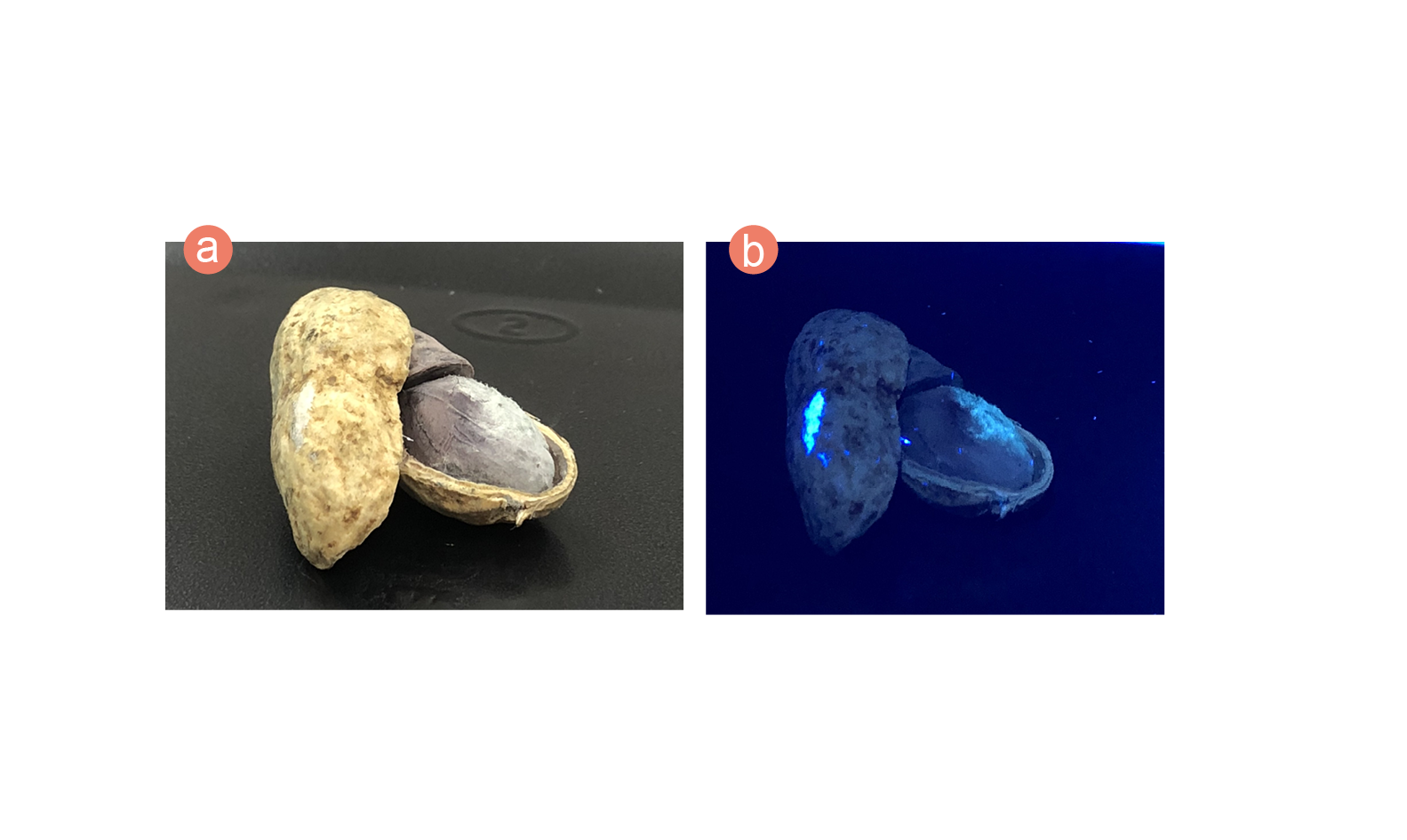
Food Safety Focus (153rd Issue, April 2019) – Food Safety Platform
Aflatoxins: The Most Notorious Mycotoxins
Reported by Ms. Janny MA, Scientific Officer,
Risk Assessment Section, Centre for Food Safety
Mycotoxins are a group of naturally occurring toxic compounds produced by certain moulds (fungi). Currently, hundreds of different mycotoxins have been identified; only few of them have been associated with potential toxicity to animals and humans. Let's kick off this mycotoxin series with the most poisonous ones – aflatoxins.
Aflatoxins in Food
Aflatoxins are a family of heat-resistant compounds produced by the moulds Aspergillus flavus, Aspergillus parasiticus and related species, which are especially abundant in hot and humid areas. Among the 14 or more aflatoxins identified, aflatoxins B1, B2, G1 and G2 are of particular health concern in both humans and animals. In general, of these four aflatoxins, aflatoxin B1 is the most frequently present in contaminated food; aflatoxin B2, G1 and G2 are usually not reported in the absence of aflatoxin B1.

(a) Mouldy peanut and (b) mouldy peanut under UV light with fluorescence observed
Fun Facts about Aflatoxins
- The term “aflatoxin” was derived from the mould, Aspergillus flavus that produced it i.e. a toxin.
- Aflatoxins are readily detected by a strong fluorescence in UV light; aflatoxins B1 and B2 produce blue fluorescence while aflatoxins G1 and G2 produce green fluorescence.
- The subscript numbers 1 and 2 indicate major and minor compounds respectively.
- Aflatoxin M1 is the metabolite of aflatoxin B1 that can occur in milk and milk products (hence the designation M) from animals consuming contaminated feed.
Food commodities such as cereals (e.g. maize, wheat and rice), oilseeds (e.g. peanut) and tree nuts (e.g. pistachio and almond) are susceptible to aflatoxin contamination.
Adverse Health Effects in Humans
Ingesting large doses of aflatoxins can result in acute poisoning, i.e. aflatoxicosis, which could be deadly, usually through damage to the liver.
Long-term consumption of food contaminated with aflatoxins can also result in adverse health effects. The International Agency for Research on Cancer concluded that aflatoxins are genotoxic (DNA-damaging) and carcinogenic to humans (Group 1). Aflatoxins can cause liver cancer and aflatoxin B1 is among the most potent ones. The risk of liver cancer in individuals exposed to both aflatoxins and hepatitis B virus (HBV) infection is reported to be about 30 times higher than that in non-HBV infected individuals.
The Joint Food and Agriculture Organization of the United Nations/WHO Expert Committee on Food Additives recommends that the intake of aflatoxins should be reduced to levels as low as reasonably possible.
Preventive Measures
Since Aspergillus species are ubiquitous in nature, it is not possible to completely eliminate aflatoxins in food which has become contaminated before and/or after harvesting. Other than hot and humid conditions, drought stress, insect damage and poor storage can also contribute to higher occurrence of moulds and consequently high levels of aflatoxins in contaminated food.
Therefore, it is important to implement effective control along the whole food chain to minimise the risk of aflatoxins contamination. Control measures include but are not limited to (1) observe good agricultural practices and good manufacturing practices; (2) discard defective (e.g. mouldy), discoloured or damaged food and do not use them as ingredients for food production; (3) ensure food is stored in cool and dry places e.g. relative humidity below 70%, temperatures below 10℃ can stop Aspergillus species growth and aflatoxins production; and (4) rotate stocks on a first-in-first-out basis.
How Can We Minimise the Risk from Aflatoxins?
Maintaining a balanced and varied diet can avoid excessive exposure to contaminants including aflatoxins from a small range of food items.
Purchase food from reliable sources and store them properly (e.g. follow the manufacturer's instruction to 'keep in a cool and dry place') and not for extended periods of time before being used. Food that looks mouldy or damaged should be discarded.
We shall continue with other mycotoxins in the next issue.


